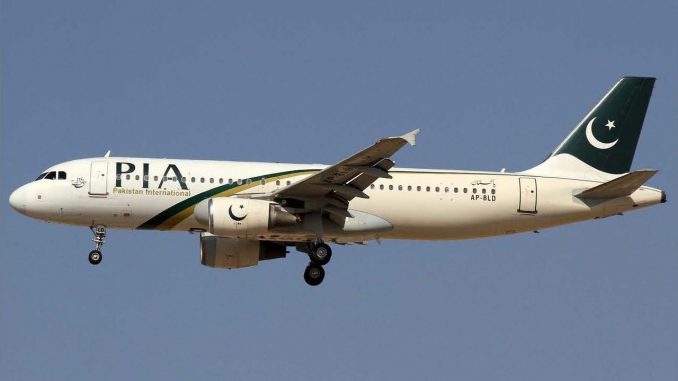
Pakistan’s Civil Aviation Authority (CAA) has released its preliminary report for last month’s crash of a Pakistan International Airlines (PIA) Airbus A320 in Karachi which killed 97 of 99 occupants and one person on the ground.
The CAA reports that the high-altitude flight from Lahore to Karachi went by uneventful; the pilots were talking about the impact Covid-19 has on their life while ignoring most standard operating procedures. The aircraft was cleared to descend to 3000 feet and for an ILS approach to runway 25L by Air Traffic Control (ATC).
At 11 nautical miles from the runway, the crew was still at approximately 7500 feet when they should have been at 3500 feet to capture the glideslope for the ILS approach. Shortly afterwards, the crew lowered the landing gear and accelerated their descend, ATC offered them a 360 degree turn to reduce height but the crew declined. Over the following minutes, ATC repeatedly advised the pilots to reduce their height and to discontinue their approach.
The pilots finally reached the glideslope at five nautical miles from the runway and decided to retract the landing gear and the speed brakes again at approximately 1750 feet. This caused the Enhanced Ground Proximity Warning System (EGPWS) to issue overspeed warnings, as the aircraft was flying at 243 knots instead of the regular 150 to 160 knots approach speed. The Karachi Approach controller, instead of the Tower controller, then cleared PK8303 to land on runway 25L at the airport.
500 feet above ground the aircraft was still flying at 220 knots, flaps were set to 3 and the landing gear was still up and the EGPWS continued to issue aural warnings to the pilots who disregarded them and touched down on runway 25L on the underside of the engines at a much higher than normal speed. The crew selected reverse thrust and applied manual brakes in an attempt to stop the aircraft.
Realising their mistake, the crew decided to execute a go-around and climbed out to 2500 feet when the engines failed one after another due to the substantial damage received during touchdown without landing gear. The Ram Air Turbine (RAT) was deployed to generate minimum electrical power for cockpit instruments and the crew called ATC, reporting both engines have failed, they were then cleared to land on either 25L or 25R.
On the day of the crash, local plane spotters posted images of the aircraft during go-around, which showed both the deployed RAT as well as visual damage on the underside of the engines.
Our hearts weep with some terrible news coming out of Karachi today. Here is AP-BLD in it's final moments, attempting a go around after it's first attempt of belly landing. A little smoke can be seen from engines as well.#PlaneSpottersPakistan #avipak #planecrash #karachi pic.twitter.com/eOKiCAeRu7
— Plane Spotters Pakistan (PSPK) (@PlaneSpottersPK) May 22, 2020
1340 meters short of runway 25L, the plane impacted a residential street at a high angle of attack, extended landing gear and Flaps set to 1. 97 of the 99 people on board passed away, as well as a 12 years-old girl on the ground. Three more people on the ground were injured.
On a technical note, it was deemed that the 14 years-old Airbus A320 was in perfect flying condition and serviceable. The CAA will continue to work with its European and US counterparts which include a further analysis of the flight data recorders (which were sent to France for examination), the crew’s performance and PIA’s training operations to determine the exact cause of the accident.
Jan-Hendrik is an aviation enthusiast from Germany, loves to travel the world and fly on as many aircraft as possible. His first flight was with a Condor 757 to Spain and has been interested in aviation ever since. His fields of expertise are aircraft accidents and passenger experience (PaxEx).



